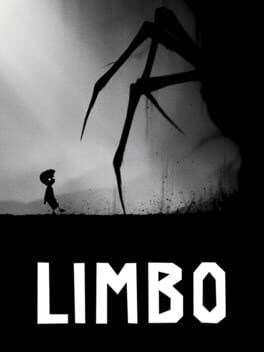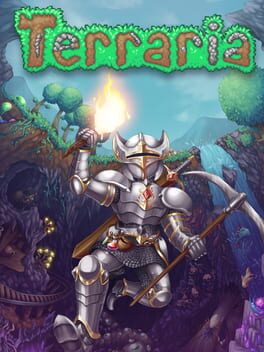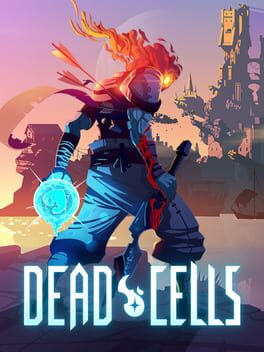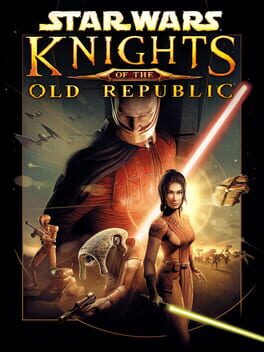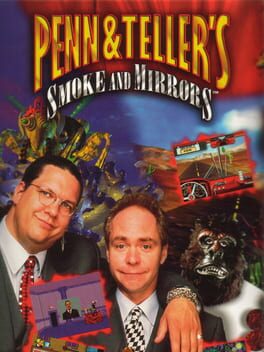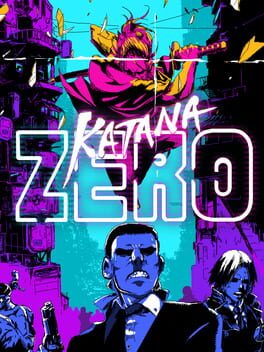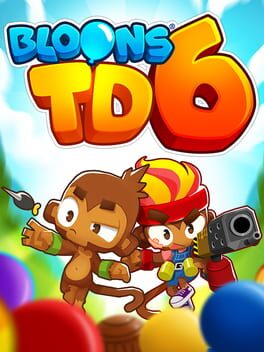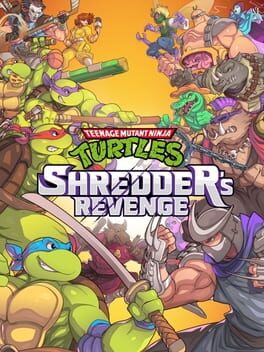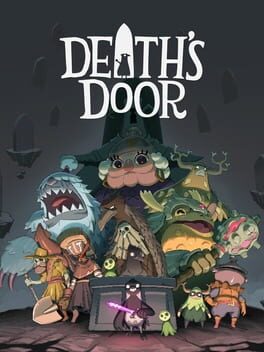LinusMxx
2 reviews liked by LinusMxx
Chrono Trigger
1995
This review contains spoilers
Magus’s castle and The Kingdom of Zeal are easily my two favorite locations in Chrono Trigger. The way the game uses the nonlinear telling of Magus’s story, emphasized by visual and musical motifs (Magus’s Castle/Zeal Palace and Schala’s theme/Magus’s theme) textures the spaces he inhabits in a way that has really stuck with me. In Magus’s Castle, your menu effects, for the only time in the entire game, reverberate as a sustained violin note plays, mirroring the one that later plays in Zeal. Faux visions of the party’s family deceive and attack you, a reflection of Zeal’s betrayal of Magus. It's a place so rife with trauma and regret and mistrust, a perfect coat of primer. Seeing the beginning of his story play out in Zeal is devastating, not because it is incredibly subversive or even that much more tragic than what some of the other characters face, but because it wields every ounce of music and art direction and gameplay and nonlinear storytelling resulting in an emotional climax where Chrono is killed, Zeal crashes to the ground and Magus begins a quest we are already intimately familiar with.
I really like Chrono Trigger, but I think what keeps me from loving it with my whole heart is how much Magus’s genius characterization and storytelling is kind of all on its own, and how it sort of feels symptomatic of his plot significance in a way that cannot be extended to other characters or parts of the game. It feels wrong to say “more of Chrono Trigger should be like Magus!” because there isn’t really room for more Magus.
The rest of the characters are fine, some are even great (I really like Frog and Marle especially) but pretty early on they are all soldered onto the hull of the S.S. Chrono, telling you pretty straightforwardly who they are and what they want, then following you along on your journey, letting you do their very whelming sidequests at your leisure. Time travel in the context of everyone not named Magus acts more as a gameplay mechanic and aesthetic choice rather than a meaningful storytelling device.
To give one example of missed potential in this respect: late in the game you are given the opportunity to allow Robo to help turn a desert into a lush forest. 400 years later you find them “dead,” resting at a shrine deep in the woods he helped nurture. For a moment, walking into that shrine and seeing a rusted, decrepit Robo was really beautiful and tragic. I thought briefly about the sacrifice he had made and how if I wanted Robo back to aid in my quest, I had to undo what good he had done. It felt meaningful. It utilized every part of the game Magus had, but then, I walked up to him, interacted with him and fixed him and he was all good. Oh and then also you do this memory where Lucca saves her Mom from a conveyor belt.
Much like this one, most of the sidequests in Chrono Trigger are just sort of butterfly effect “puzzles” where you do something in the past and kind of check in on it every time period until there is something new to do, then at the end some sort of pretty typical character resolution happens. Again, I’d like to reiterate that it's not even so much that the miniature stories being told here are bad, or worse than Magus’s, but they are much, much less artfully told in a way that makes it difficult to care.
When I think about how I would have liked this to be done differently, I think of how much better Robo’s sacrifice could have been among other things, but honestly I do think Magus is just always going to be the best character no matter how you spin it. The roles all of the characters would have to play in the story to justify exploring their stories with comparable depth would probably make parts of the game feel both contrived and claustrophobic. Maybe my issue is that the game’s insistence on there being character side quests at all makes them feel cheap and obligatory. Maybe I would have just liked if the party members played more of a role in the actual story. Or maybe I just want more Magus.
I really like Chrono Trigger, but I think what keeps me from loving it with my whole heart is how much Magus’s genius characterization and storytelling is kind of all on its own, and how it sort of feels symptomatic of his plot significance in a way that cannot be extended to other characters or parts of the game. It feels wrong to say “more of Chrono Trigger should be like Magus!” because there isn’t really room for more Magus.
The rest of the characters are fine, some are even great (I really like Frog and Marle especially) but pretty early on they are all soldered onto the hull of the S.S. Chrono, telling you pretty straightforwardly who they are and what they want, then following you along on your journey, letting you do their very whelming sidequests at your leisure. Time travel in the context of everyone not named Magus acts more as a gameplay mechanic and aesthetic choice rather than a meaningful storytelling device.
To give one example of missed potential in this respect: late in the game you are given the opportunity to allow Robo to help turn a desert into a lush forest. 400 years later you find them “dead,” resting at a shrine deep in the woods he helped nurture. For a moment, walking into that shrine and seeing a rusted, decrepit Robo was really beautiful and tragic. I thought briefly about the sacrifice he had made and how if I wanted Robo back to aid in my quest, I had to undo what good he had done. It felt meaningful. It utilized every part of the game Magus had, but then, I walked up to him, interacted with him and fixed him and he was all good. Oh and then also you do this memory where Lucca saves her Mom from a conveyor belt.
Much like this one, most of the sidequests in Chrono Trigger are just sort of butterfly effect “puzzles” where you do something in the past and kind of check in on it every time period until there is something new to do, then at the end some sort of pretty typical character resolution happens. Again, I’d like to reiterate that it's not even so much that the miniature stories being told here are bad, or worse than Magus’s, but they are much, much less artfully told in a way that makes it difficult to care.
When I think about how I would have liked this to be done differently, I think of how much better Robo’s sacrifice could have been among other things, but honestly I do think Magus is just always going to be the best character no matter how you spin it. The roles all of the characters would have to play in the story to justify exploring their stories with comparable depth would probably make parts of the game feel both contrived and claustrophobic. Maybe my issue is that the game’s insistence on there being character side quests at all makes them feel cheap and obligatory. Maybe I would have just liked if the party members played more of a role in the actual story. Or maybe I just want more Magus.
Limbo
2010
This review contains spoilers
“Limbo is like the Joy Division of video games” - My summary blurb of Limbo upon first finishing it about six years ago.
If those of you on rateyourmusic are familiar with my ever-so-popular list comparing video games to albums, this comparison was the first one I made that ignited the list. What exactly does that mean, though? Is comparing Limbo to the music of the iconic post-punk band Joy Division a baseless comparison? Considering both are from entirely different artistic mediums, there is little creative leeway in comparing the two. As I’m sure most people are aware, Joy Division’s music is very dark and dreary. This seemed appropriate considering the mental state of frontman Ian Curtis, a tortured soul whose anguish seeped into the bleak spirit of Joy Division’s music. Even though their sound proved incredibly influential to the fellow post-punk bands that followed, none of them could truly match the atmosphere, nihilistic dreariness, and cathartic beauty of Joy Division. Their imitators sounded disingenuous by comparison, romanticizing the darkness a bit too much and coming off as goth in the process, and Joy Division was never goth. They focused much too heavily on the darker aspects of Joy Division’s music while missing a point of the brooding minimalism that was pertinent to Joy Division’s atmosphere. One can’t forget how effective the one-note, open-fretted bassline is to “I Remember Nothing” in evoking the dark atmosphere the band always tries to create. Limbo is an indie platformer that is dark and dreary and evokes an atmosphere similar to Joy Division’s music. Limbo is a game that I also feel is mislabeled as a horror game, just as Joy Division is mislabeled as goth. Limbo is a creepy game on the surface, but its progression, atmosphere, and esoteric elements bring forth a certain depth that I wouldn’t classify as horror. Its darkness is a little harder to classify, just like Joy Divisions.
Limbo is an indie game from Swedish developer Playdead, and this was the studio’s first-ever output. It was featured in Microsoft’s 2010 “Summer of Arcade”, an annual event that showcased the Xbox 360’s indie titles like Braid and Castle Crashers in years before. Given that most of the previous Xbox indie titles had minimalist tendencies and borrowed heavily from old-school genres, it would be expected of Limbo to feel like a game that was dusted off from the crevices of nostalgia. Limbo’s base genre in terms of gameplay is a 2D platformer, but you’d be hard-pressed to execute the same acrobatics as Mario. All the playable character in Limbo can do is walk and jump a few feet into the air with the occasional moving of a box or another object. Limbo falls more under the cinematic platformer genre. This style relishes restrained controls to either give higher precedence to a story or use the jumping as a means for something other than climbing onto platforms. Limbo’s gameplay is heavily based on puzzles. This is to the extent that every single section of the game is based around one puzzle, and the puzzles themselves are the chapters that divide this game. The range of puzzles is incredibly diverse, and it’s what makes the game consistently interesting. Some puzzles are a matter of finding a platform to reach another area, and some will force the player to take a more methodical approach to traversal. These more circuitous puzzles appear a lot later in the game and involve gimmicks like anti-gravity and being controlled by a slug that latches onto the character’s head. Some of the more precision-based puzzles are hair-raising because the precision usually has an ultimatum of death if the player does not execute them properly. This ranges from being electrocuted, shot, sawed in half, impaled by the leg of a giant spider, etc.
With all of these gruesome deaths in mind, I still do not consider Limbo to be a horror game. There are some hectic moments in the game, but the elements of Limbo combined with the consistent atmosphere do not strike me as something that appropriately fits into the horror genre. If this is a horror game, it’s certainly not a conventional one. The most readily noticeable attribute of Limbo is its aesthetics. The game is presented in a monochrome color scheme strictly consisting of black and white. It makes the foreground seem like it’s shrouded in a surrealistic fog. It’s an aesthetic choice that compliments the minimalistic gameplay superbly. The monochrome color immediately reminds me of Carl Theodor Dreyer's 1932 film Vampyr, a film with an incredibly similar aesthetic and an ethereal, surrealistic atmosphere. Vampyr is also a work miscategorized into the horror genre, or at least in the traditional sense. The horror presented in Vampyr is less about offering fictional terrors that frighten the audience due to their otherworldliness and setting a simultaneously discomforting and striking mood and atmosphere. Horror is a genre that has to be set on some grounds of reality for it to be scary, contrasting one’s comfortable reality with something disquieting. In both Limbo and Vampyr, the atmosphere and aesthetic are so consistent that the world it presents feels so alien to reality that all of its factors are commonplace. The spider chasing you down near the beginning of the game isn’t scary when the rest of the world is just as hostile. This isn’t a criticism of the game, however. The game does not need to have a heavy emphasis on building terror for the player.
Similar to Vampyr, Limbo’s progression and lack of narrative structure also do not tend well to the horror genre. I feel the horror genre needs a bit of context to make it horrifying. In Limbo, you play as a boy whose only distinctive physical feature is his glowing eyes. The rest of him is just as dark as the world he inhabits. He runs through the world of this game puzzle after puzzle, never really deviating from the linear route the game presents. There is no set objective or mission on this boy’s journey, only a vague initiative to keep going and never turn back. He ventures from wooded areas to dark, abandoned industrial landscapes that are so reminiscent of the backdrops from Eraserhead. These industrial settings then make a turn for the futuristic when the game implements the anti-gravity as mentioned earlier puzzles. Eventually, a gravity puzzle catapults the protagonist into an invisible glass casing that shatters in slow motion. He slowly hoists himself back up to find himself in the wooded area where he started. It’s here where the game seems cyclical, a punishment for the character to endure. However, he soon finds the silhouette of a girl, and then the game ends. “Limbo,” the title of the game, gives away exactly what the ambiguous narrative is supposed to convey: the concept of a state of purgatory. It’s a place between life and death that carries a great sense of directionless wandering. In Limbo’s case, this wandering is more literal as the protagonist is venturing through the void without any clear purpose or context. If this is a horror game, it’s an intrinsic horror that verges on nihilism. However nihilistic the game might present itself, there is an underlying beauty to it. There is a light that illuminates through the substantial darkness, something that I’ve always felt about Joy Division’s 1980 album Closer. It’s dismal in context, but it conveys a sense that there is a positive aspect to a weary topic like death. As for the ending, perhaps the girl is “a guide to come and take him by the hand” (that's a lyric to Joy Division’s “Disorder” if you didn’t know), a beautiful spirit to take him away from the hostile land and to the great beyond.
Limbo is a difficult game to pigeonhole. It’s easy to confuse the darkness the game presents on the surface to fit into the horror genre. However, all of the other elements would prove to be quite substantial. As a video game, the puzzles are all executed cleverly and gel well with minimalist controls. As a piece of art, the horrific, brooding, and grim aspects of Limbo are balanced by a light and challenging presentation that leaves an impact on the player’s minds more than just scaring them or making them feel afraid. Because of all of these nuances with a dark piece of work, the Joy Division comparisons I initially made when I first played this game still ring true to me.
------
Attribution: https://erockreviews.blogspot.com
If those of you on rateyourmusic are familiar with my ever-so-popular list comparing video games to albums, this comparison was the first one I made that ignited the list. What exactly does that mean, though? Is comparing Limbo to the music of the iconic post-punk band Joy Division a baseless comparison? Considering both are from entirely different artistic mediums, there is little creative leeway in comparing the two. As I’m sure most people are aware, Joy Division’s music is very dark and dreary. This seemed appropriate considering the mental state of frontman Ian Curtis, a tortured soul whose anguish seeped into the bleak spirit of Joy Division’s music. Even though their sound proved incredibly influential to the fellow post-punk bands that followed, none of them could truly match the atmosphere, nihilistic dreariness, and cathartic beauty of Joy Division. Their imitators sounded disingenuous by comparison, romanticizing the darkness a bit too much and coming off as goth in the process, and Joy Division was never goth. They focused much too heavily on the darker aspects of Joy Division’s music while missing a point of the brooding minimalism that was pertinent to Joy Division’s atmosphere. One can’t forget how effective the one-note, open-fretted bassline is to “I Remember Nothing” in evoking the dark atmosphere the band always tries to create. Limbo is an indie platformer that is dark and dreary and evokes an atmosphere similar to Joy Division’s music. Limbo is a game that I also feel is mislabeled as a horror game, just as Joy Division is mislabeled as goth. Limbo is a creepy game on the surface, but its progression, atmosphere, and esoteric elements bring forth a certain depth that I wouldn’t classify as horror. Its darkness is a little harder to classify, just like Joy Divisions.
Limbo is an indie game from Swedish developer Playdead, and this was the studio’s first-ever output. It was featured in Microsoft’s 2010 “Summer of Arcade”, an annual event that showcased the Xbox 360’s indie titles like Braid and Castle Crashers in years before. Given that most of the previous Xbox indie titles had minimalist tendencies and borrowed heavily from old-school genres, it would be expected of Limbo to feel like a game that was dusted off from the crevices of nostalgia. Limbo’s base genre in terms of gameplay is a 2D platformer, but you’d be hard-pressed to execute the same acrobatics as Mario. All the playable character in Limbo can do is walk and jump a few feet into the air with the occasional moving of a box or another object. Limbo falls more under the cinematic platformer genre. This style relishes restrained controls to either give higher precedence to a story or use the jumping as a means for something other than climbing onto platforms. Limbo’s gameplay is heavily based on puzzles. This is to the extent that every single section of the game is based around one puzzle, and the puzzles themselves are the chapters that divide this game. The range of puzzles is incredibly diverse, and it’s what makes the game consistently interesting. Some puzzles are a matter of finding a platform to reach another area, and some will force the player to take a more methodical approach to traversal. These more circuitous puzzles appear a lot later in the game and involve gimmicks like anti-gravity and being controlled by a slug that latches onto the character’s head. Some of the more precision-based puzzles are hair-raising because the precision usually has an ultimatum of death if the player does not execute them properly. This ranges from being electrocuted, shot, sawed in half, impaled by the leg of a giant spider, etc.
With all of these gruesome deaths in mind, I still do not consider Limbo to be a horror game. There are some hectic moments in the game, but the elements of Limbo combined with the consistent atmosphere do not strike me as something that appropriately fits into the horror genre. If this is a horror game, it’s certainly not a conventional one. The most readily noticeable attribute of Limbo is its aesthetics. The game is presented in a monochrome color scheme strictly consisting of black and white. It makes the foreground seem like it’s shrouded in a surrealistic fog. It’s an aesthetic choice that compliments the minimalistic gameplay superbly. The monochrome color immediately reminds me of Carl Theodor Dreyer's 1932 film Vampyr, a film with an incredibly similar aesthetic and an ethereal, surrealistic atmosphere. Vampyr is also a work miscategorized into the horror genre, or at least in the traditional sense. The horror presented in Vampyr is less about offering fictional terrors that frighten the audience due to their otherworldliness and setting a simultaneously discomforting and striking mood and atmosphere. Horror is a genre that has to be set on some grounds of reality for it to be scary, contrasting one’s comfortable reality with something disquieting. In both Limbo and Vampyr, the atmosphere and aesthetic are so consistent that the world it presents feels so alien to reality that all of its factors are commonplace. The spider chasing you down near the beginning of the game isn’t scary when the rest of the world is just as hostile. This isn’t a criticism of the game, however. The game does not need to have a heavy emphasis on building terror for the player.
Similar to Vampyr, Limbo’s progression and lack of narrative structure also do not tend well to the horror genre. I feel the horror genre needs a bit of context to make it horrifying. In Limbo, you play as a boy whose only distinctive physical feature is his glowing eyes. The rest of him is just as dark as the world he inhabits. He runs through the world of this game puzzle after puzzle, never really deviating from the linear route the game presents. There is no set objective or mission on this boy’s journey, only a vague initiative to keep going and never turn back. He ventures from wooded areas to dark, abandoned industrial landscapes that are so reminiscent of the backdrops from Eraserhead. These industrial settings then make a turn for the futuristic when the game implements the anti-gravity as mentioned earlier puzzles. Eventually, a gravity puzzle catapults the protagonist into an invisible glass casing that shatters in slow motion. He slowly hoists himself back up to find himself in the wooded area where he started. It’s here where the game seems cyclical, a punishment for the character to endure. However, he soon finds the silhouette of a girl, and then the game ends. “Limbo,” the title of the game, gives away exactly what the ambiguous narrative is supposed to convey: the concept of a state of purgatory. It’s a place between life and death that carries a great sense of directionless wandering. In Limbo’s case, this wandering is more literal as the protagonist is venturing through the void without any clear purpose or context. If this is a horror game, it’s an intrinsic horror that verges on nihilism. However nihilistic the game might present itself, there is an underlying beauty to it. There is a light that illuminates through the substantial darkness, something that I’ve always felt about Joy Division’s 1980 album Closer. It’s dismal in context, but it conveys a sense that there is a positive aspect to a weary topic like death. As for the ending, perhaps the girl is “a guide to come and take him by the hand” (that's a lyric to Joy Division’s “Disorder” if you didn’t know), a beautiful spirit to take him away from the hostile land and to the great beyond.
Limbo is a difficult game to pigeonhole. It’s easy to confuse the darkness the game presents on the surface to fit into the horror genre. However, all of the other elements would prove to be quite substantial. As a video game, the puzzles are all executed cleverly and gel well with minimalist controls. As a piece of art, the horrific, brooding, and grim aspects of Limbo are balanced by a light and challenging presentation that leaves an impact on the player’s minds more than just scaring them or making them feel afraid. Because of all of these nuances with a dark piece of work, the Joy Division comparisons I initially made when I first played this game still ring true to me.
------
Attribution: https://erockreviews.blogspot.com

